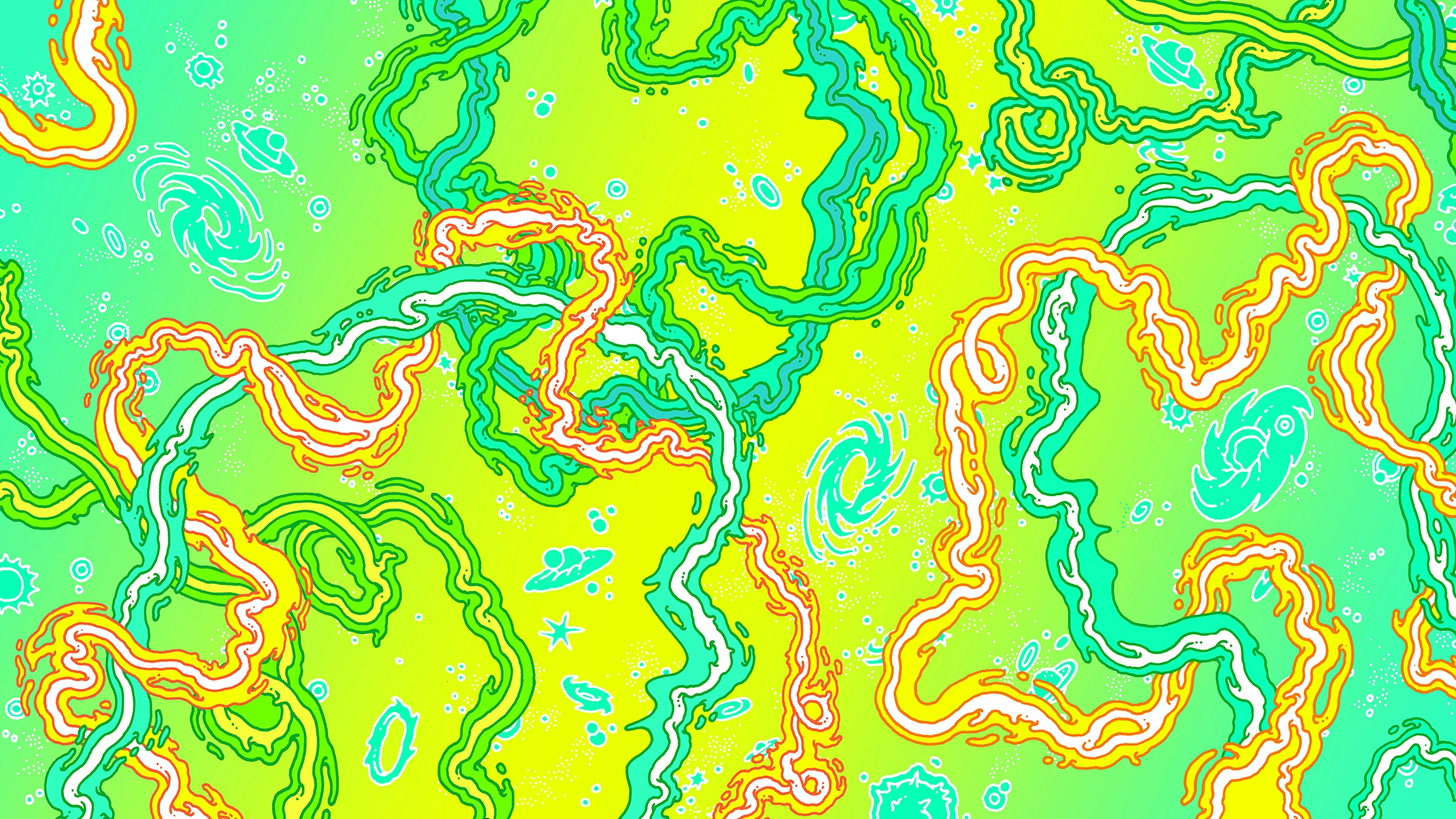

That's right- our point-like particle has transformed into a string! This is the basis of string theory:
"A theoretical framework in which the point-like particles are replaced by one-dimensional objects
called strings."
What might these strings look like? Well, on ordinary scales, a string appears
like a particle, with mass, charge, and other properties outlined by the Standard Model of elementary
particles chart. On the string-scale, however, which is to say the quantum scale, it's hard to imagine what a
string could look like. The image that intuitively comes to mind when you imagine a tiny, vibrating, circular
string will suffice. Maybe something like this?

What's really fascinating is that according to string theory, all strings
are made of the same "stuff." The point-like particles of the Standard Model are themselves composed of different
matter- this is what gives rise to their different qualities. For strings, however, this is not the case. Strings
are, in terms of matter, identical. What gives rise to their different qualities is their unique vibrational patterns.
Just as each 'string' on a guitar is tuned to produce a certain note, the strings of string theory vibrate in certain
ways to produce qualities unique to that string.
The miraculous thing about strings and their vibrational patterns is that the qualities that arise from their
vibrational patterns match those of the elementary particles with stunning mathematical accuracy. What's more,
the math involved to calculate these properties produces properties that describe a crucial particle: the graviton
Recall that the Standard Model does not account for gravity, the final force needed to construct a theory of
everything. Because strings behave in such a way that they produce the conditions necessary for the graviton, it stands
as an exciting contender, or at least an exciting part of the puzzle, in the search for a unified theory!
While we are not going to get into the math involved in string theory, the math produces a strange and challenging
outcome: for string theory to work, it requires 11 dimensions.